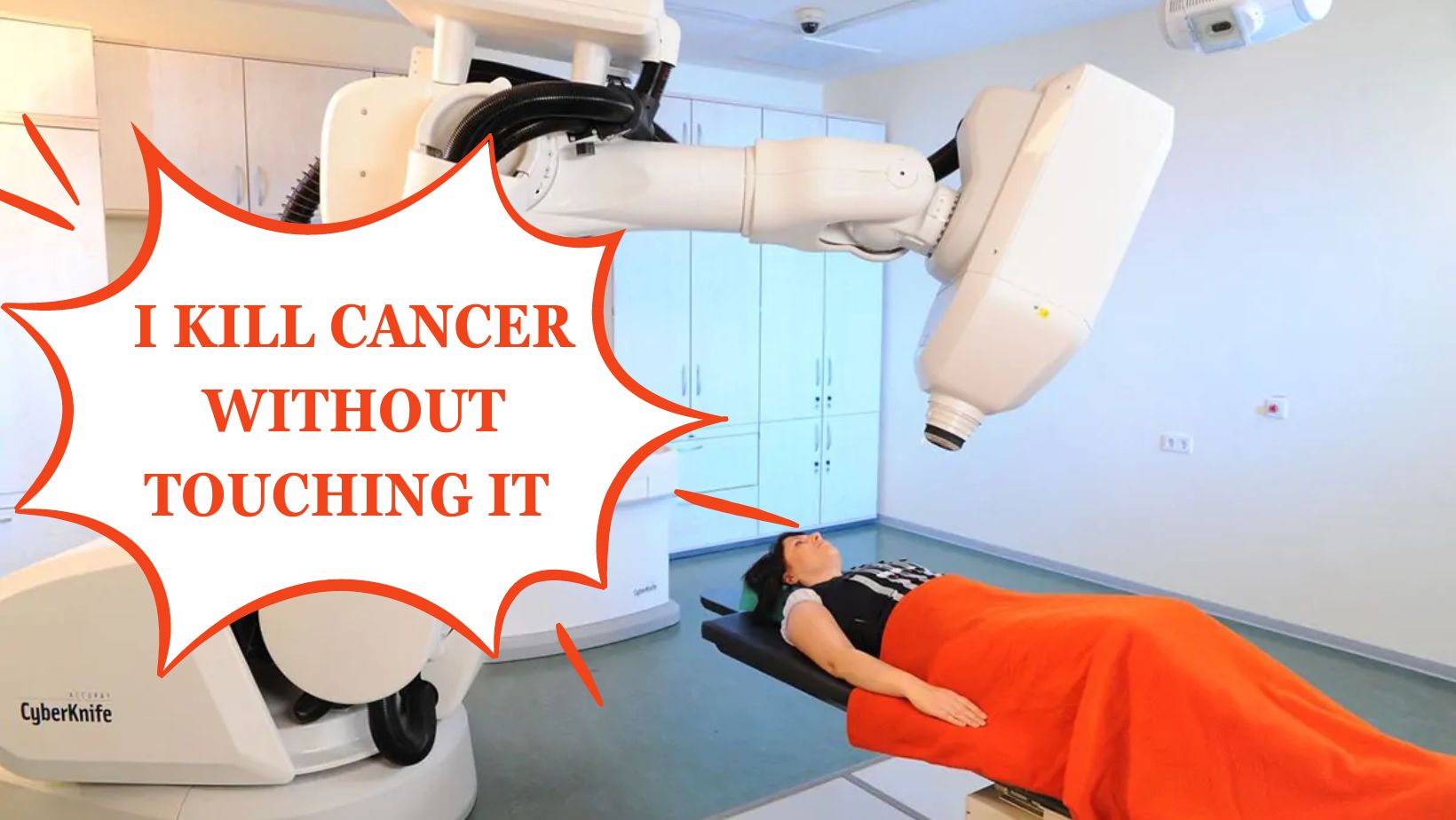Cyberknife is cutting away tumors without surgery
In healthcare, precision is everything. For too long, biopsies and cancer diagnostics have relied on methods that, while effective, often left room for improvement. But what if we could combine the power of robotics, advanced imaging, and AI to create a system that not only targets suspicious tissue with pinpoint accuracy but also does so faster and less invasively than ever before? Like everything else that has evolved with technology, so has cancer treatment. The partnership of Accuray & the Godfather of medical robotics, Kuka, to produce CyberKnife is a match made in heaven to kill cancer. It is making cancer treatment better with technology.
What is Cyberknife?
The CyberKnife System is a non-invasive, robotic radiation therapy device used for treating tumors and other medical conditions. It delivers high doses of precisely targeted radiation to tumors, while minimizing damage to surrounding healthy tissues.
Here are some key features:
- Precision: The CyberKnife uses real-time imaging and robotic technology to track tumor movement and adjust radiation beams accordingly, even compensating for patient movement like breathing.
- Non-Invasive: Unlike traditional surgery, the CyberKnife does not require any incisions. It delivers radiation therapy without the need for a surgical procedure.
- Versatility: It can be used to treat tumors in virtually any part of the body, including the brain, spine, lungs, liver, pancreas, and prostate.
- Outpatient Treatment: Most treatments with the CyberKnife are done on an outpatient basis, and patients can typically resume normal activities shortly after treatment.
- Reduced Side Effects: The precision of the CyberKnife often results in fewer side effects compared to traditional radiation therapy, as it spares more of the surrounding healthy tissue.
The CyberKnife is often used for treating cancerous and non-cancerous tumors, as well as certain neurological conditions, making it a valuable tool in modern radiation oncology.
Key Features of AI use in Cyberknife
The CyberKnife System utilizes artificial intelligence (AI) in its operations. By incorporating AI, the CyberKnife system enhances the precision, safety, and effectiveness of radiation therapy, making it a powerful tool in modern cancer treatment. Here’s how AI is integrated into the system:
- Real-Time Tumor Tracking: The CyberKnife uses AI algorithms to track the movement of tumors in real-time, especially those that move with respiration or other bodily functions. This ensures that radiation is delivered precisely to the tumor, even as it moves, without harming surrounding healthy tissue.
- Adaptive Treatment Planning: AI helps in creating and adjusting treatment plans based on the specific characteristics of the tumor and its location. As the treatment progresses, the system can adapt the radiation delivery to account for changes in tumor size, shape, or position.
- Patient Positioning: The CyberKnife system uses AI to help in accurately positioning the patient for treatment. It continuously monitors and adjusts the radiation beams, compensating for any patient movement, such as breathing, to ensure that radiation is delivered exactly where it is needed.
- Data Analysis: AI assists in analyzing data from previous treatments and patient outcomes, helping to improve treatment plans and enhance the system’s overall accuracy and efficiency.
Pros and Cons of Cyberknife

Pros
Better accuracy, precision, faster and more comfortable for the patient
Cons
Not readily available.

CyberKnife vs traditional radiotherapy
Precision:
- CyberKnife: Highly precise with real-time tumor tracking and adaptive treatment.
- Traditional Radiotherapy: Less precise; relies on pre-treatment imaging and fixed beam positions.
Patient Comfort:
- CyberKnife: Non-invasive, no need for rigid frames or anesthesia.
- Traditional Radiotherapy: Often requires immobilization devices or frames.
Treatment Sessions:
- CyberKnife: Typically requires fewer sessions (1-5) due to high-dose delivery.
- Traditional Radiotherapy: Usually involves more sessions (15-40) with lower doses per session.
Movement Compensation:
- CyberKnife: Automatically adjusts for tumor movement (e.g., breathing).
- Traditional Radiotherapy: Requires manual adjustments or gating techniques.
Side Effects:
- CyberKnife: Reduced risk of side effects due to precise targeting and sparing of healthy tissue.
- Traditional Radiotherapy: Higher risk of side effects due to less precise targeting.
Flexibility:
- CyberKnife: Can treat tumors in hard-to-reach or delicate areas (e.g., spine, brain).
- Traditional Radiotherapy: Limited in treating tumors near critical structures.
Technology:
- Traditional Radiotherapy: Limited use of AI, primarily relies on fixed protocols.
- CyberKnife: Integrates AI for real-time adjustments and personalized treatment.
What the Experts are saying;
Watch this video of Dr. Michael S. Payne Jr for a more detailed explanation of how Cyberknife is used to treat cancer.
Types of Cancers Cyberknife treats
- Brain tumor
- Lung cancer
- Cancer of the Pancreas
- Spinal cancer
- Liver Cancer
- Prostate cancer
So there it is, folks. To get you more acquainted with Cyberknife, here are a couple of links for your bed-time reading.








